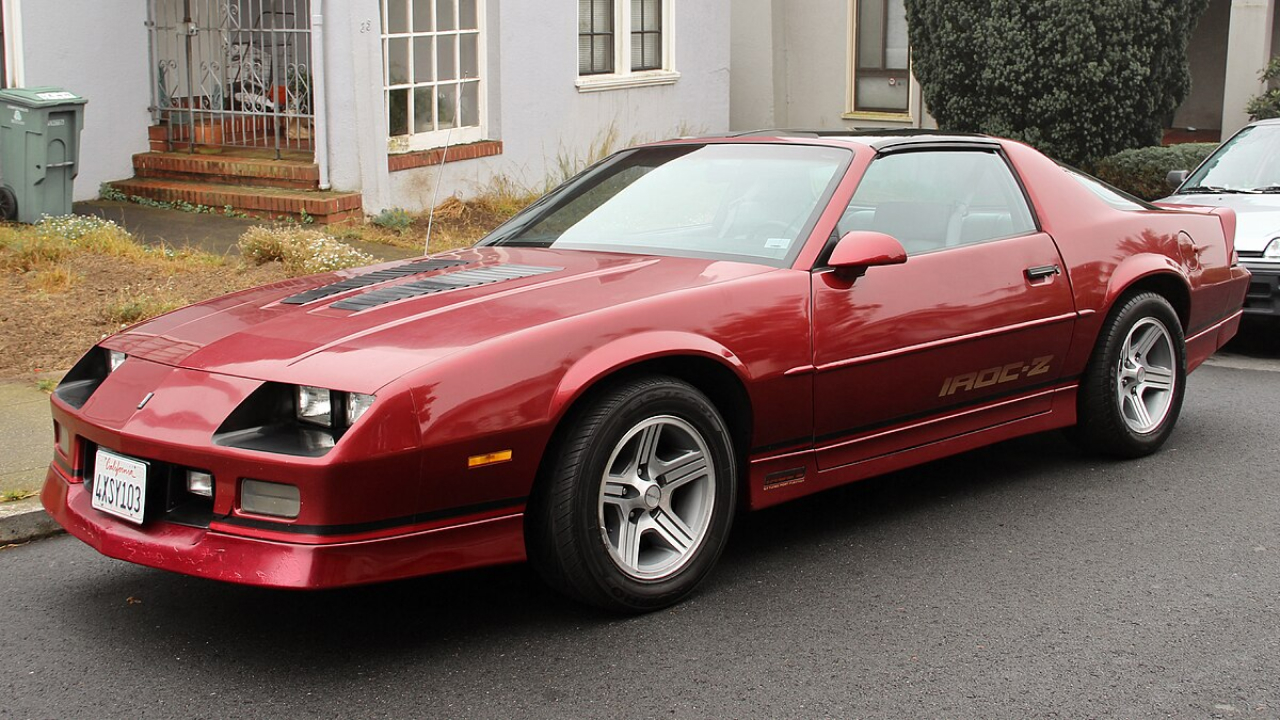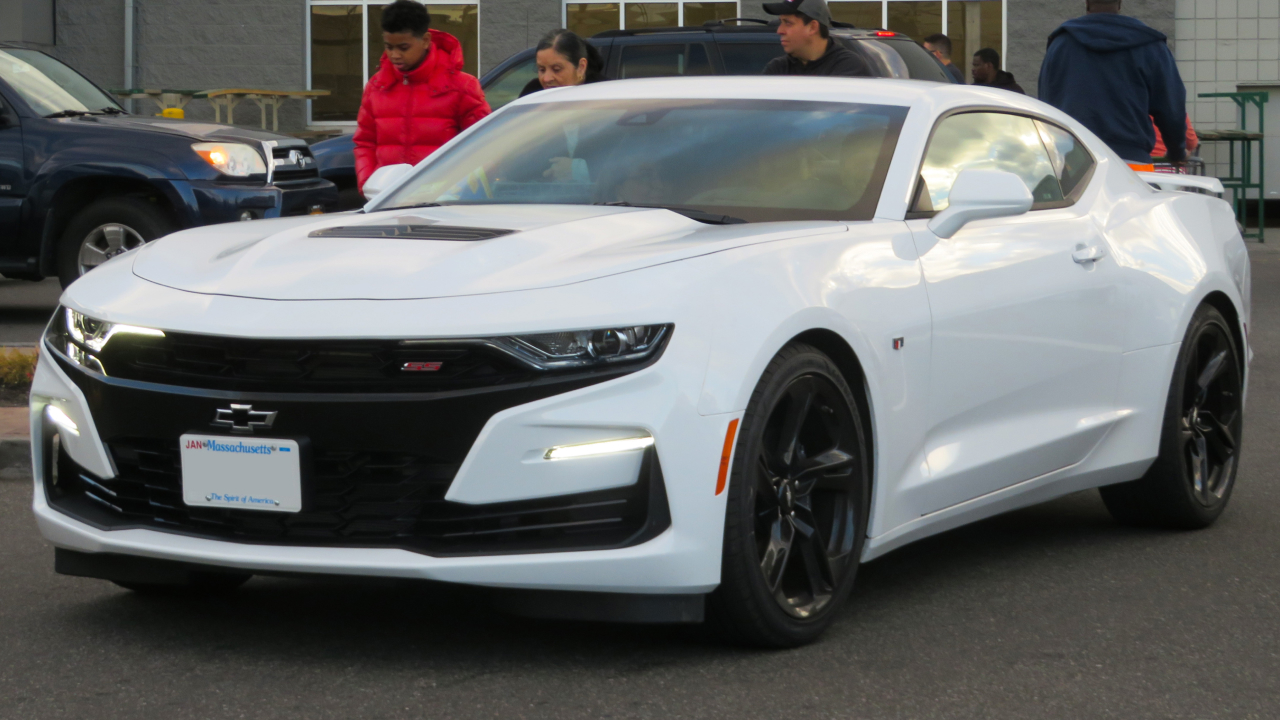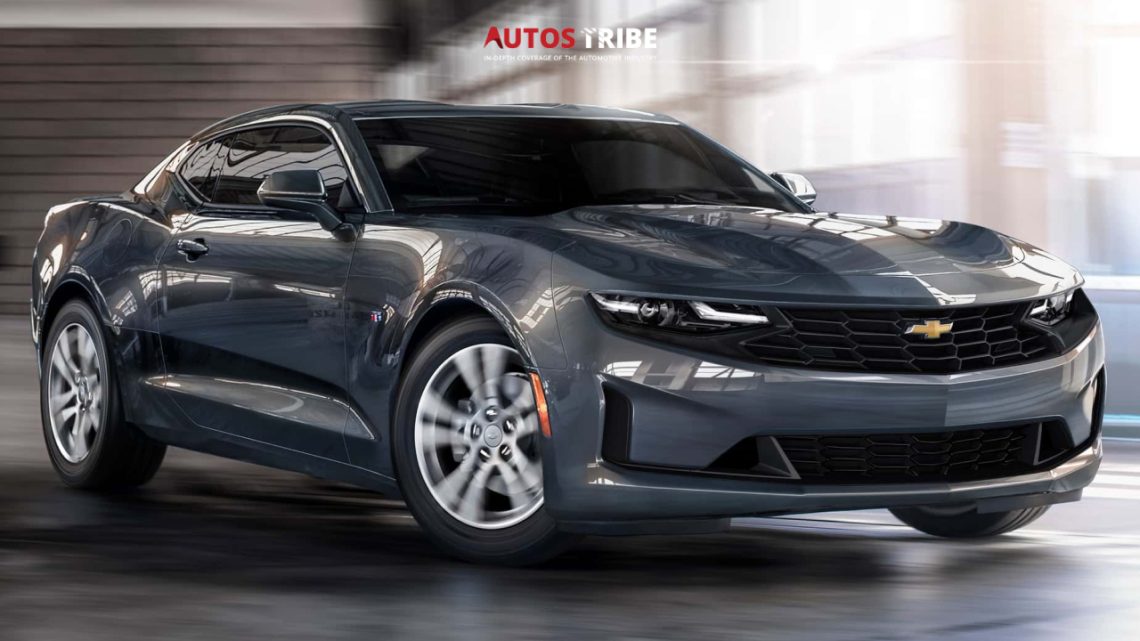Muscle cars and four-bangers don’t typically go together. Ask any car enthusiast about the Chevy Camaro, and they’ll likely talk about roaring V8s and impressive burnouts. The same 4 cylinder Camaro known for American muscle has sometimes sported an engine you’d expect in a basic economy car. It’s like discovering your star quarterback is also a chess champion.
Now, before purists get upset, let’s take a look at the Camaro’s lesser-known four-cylinder past. From the underpowered Iron Duke of the ’80s to today’s surprisingly lively turbo models, these engines have an interesting story. So get ready – we’re about to explore the history of 4 cylinder Camaro.
Table of Contents
Camaro History at a Glance
Two years after the Ford Mustang sparked the pony-car craze in the US, the first Chevrolet Camaro Coupe hit the market in 1966. But here’s a twist: Chevy’s famous pony car has had four-cylinder engines more than once. Yes, that’s right. From the beginning, it featured both six-cylinder and V8 engines. The second-generation Chevrolet Camaro Coupe produced over 12 model years. It had the longest run from 1970 to 1981 with several updates.
The third and fourth generations are notable for their quad recess headlights. Here, the fourth being a modern take on the third. After that, the Camaro took an eight-year break. A redesigned Chevrolet Camaro Coupe emerged in the 2010 model year. It built on the GM Zeta platform for the modern era. The final Camaro, the sixth generation, was based on the praised GM Alpha platform. It has a top-notch handling that stays competitive even in 2024, nine years after its debut.
Four Piston Camaro
Chevrolet started offering the 4 cyl Camaro in 1982 (the third generation) and ditched it in 1986. It happened majorly due to its lackluster performance in the sports car. It took the manufacturer 30 years to start offering the four-cylinder vehicles again, but this time it was turbocharged. Also, it was about three times more powerful than its first iteration.
1. Third Generation Chevrolet 4 Cyl Camaro (1982-1992)

The 3rd gen Camaro was a whole new beast as compare to the 1st and 2nd gens. It was shorter, had a 7″ smaller wheelbase, and was 300-400 lbs lighter depending on the model. It remained rear-drive but transformed into a 3-door hatchback with a fold-down rear seat. Camaro comes by vastly improving cargo space over the tiny trunk of the previous model.
Front and rear seat dimensions stayed almost identical. The new Camaro featured quad rectangular headlights in the front. While the taillights kept the tri-colored look from the last model. They were larger and wrapped around to serve as rear side marker lights. Inside, it had a completely new center console and dashboard, though the traditional glovebox was oddly missing. T-tops were still available.
Z28 models had unique noses without the 3 narrow horizontal slats above the grille. Their parking lamps were rectangular rather than square. Beneath it all, a live rear axle remained, but it switched from leaf springs to a multi-link setup.
The Z28 came with the 145 hp 305 as standard, with the 165 hp “crossfire injection” 305 as the top option. Because the 350 was no longer available (it would return in 1987). All engines except the crossfire 305, which was automatic-only, could be matched with 4-speed manuals and 3-speed automatics. The Z28s had lightweight fiberglass hoods with twin functional hood air induction flaps on crossfire-injected models.
Camaro enthusiasts surely lamented the end of the 396s and LT-1 350s of the past… but a new era had arrived. Raw power was out, luxury and fuel efficiency were in, and aside from upgrading to a Corvette, a European exotic (or heaven forbid, a Mustang GT), this was as good as it got.
1983 Camaro
On the outside, the ’83 Z28 looked just like the ’82 model, but it had some noteworthy updates. The unreliable crossfire-injected 305 was replaced mid-year with a 190 hp L69 305 4 bbl “H.O.” V8. This new engine could be paired with either a 5-speed manual or a 4-speed automatic transmission, options now also available for the 2.8 V6 and the “regular” 305 V8. The HO 305 greatly improved the Z28’s reputation, allowing it to better compete with the Mustang GT in street races. Additionally, all radios were digital, replacing the unique analog console clock.
1984 Camaro
The 1984 Camaros saw minimal changes—since the Z28 received a new engine the previous year. It was the Berlinetta’s turn, featuring a Star Wars-inspired digital dashboard. This dashboard featured a centrally mounted hinged stereo pod that could swivel towards either the driver or passenger. Despite, or perhaps due to, this Tokyo-by-night dashboard, Berlinetta sales significantly dropped compared to previous years.
However, the base model and Z28 experienced a substantial sales surge. Over 200,000 units sold this year, making it the best-selling year of the 3rd generation. Also, the highest sales figure the Camaro would ever achieve again.
Road & Track magazine recognized the 1984 Camaro/Firebird among the top 12 cars globally. As the top choice in the Best Sports GT category priced between $11,000 and $14,000. Car and Driver also hailed the 1984 Camaro Z28 as America’s finest in handling, surpassing even the newly introduced Corvette.
1985 Camaro
The 1985 Camaro had a slightly updated front, with edges now more rounded and a new grille design. The three parallel slats on the entry-level and Berlinetta variants were slimmer. The Z28s included a fresh straight louvered grille, but the biggest feature was the launch of the IROC-Z (International Race Of Champions).
The Camaro IROC-Z came with an improved suspension, including lowered springs, specially tuned shocks, and a larger rear sway bar. It also had a special decal package and an optional Tuned Port Injection system from the Corvette but with a 205 hp 305 engine instead of the Corvette’s 350. Moreover, it had the Corvette’s 245/50ZR16 rubber and modern aluminum five-spoke 16″ rims, a first for a 4 Cylinder Camaro.
IROC-Zs featured a single paint scheme unlike the Z28’s 2-tone, but both got new “twin-zipper” hood vents. The IROC’s taillights were unique with a tight cross-hatch pattern. The base Iron Duke I4 remained for one more year, and the 2.8 V6 got a power boost to 130 hp.
| Year | Engine Specs | Variants | Notable Features |
| 1982 | 2.5L Iron Duke I4 (92 hp), 2.8L V6 (112 hp), 5.0L V8 (145 hp) | Base, Berlinetta, Z28 | Rear-drive, 3-door hatchback, live rear axle, Macpherson struts, Z28 with fiberglass hood |
| 1983 | 2.5L I4, 2.8L V6, 5.0L V8, L69 305 V8 (190 hp) | Base, Berlinetta, Z28 | 5-speed manual or 4-speed automatic, digital radios |
| 1984 | 2.5L I4, 2.8L V6, 5.0L V8 | Base, Berlinetta, Z28 | Star Wars-inspired digital dashboard in Berlinetta, minimal changes, best-selling year of 3rd gen |
| 1985 | 2.5L I4, 2.8L V6 (130 hp), 5.0L V8 (170 hp), H.O. 305 V8 (190 hp), TPI 305 V8 (205 hp) | Base, Berlinetta, Z28, IROC-Z | Updated front design, IROC-Z with improved suspension and Tuned Port Injection, unique taillights, Iron Duke I4 remained |
2. Sixth Generation 4 Cylinder Camaro (2016 to Present)

The sixth-generation Camaro debuted in 2016 and is still going strong. Instead of just evolving, this generation marks a revolutionary leap for the 4 Cylinder Camaro. It rides on an entirely different chassis from the fifth generation. Everything changed. The redesign was so impactful that Motor Trend awarded the Camaro its Car of the Year title once more.
GM sources indicate that 70% of the 6th Gen Camaro’s components are unique, despite sharing a platform with the Cadillac ATS and CTS. The designers prioritized reducing weight and improving aerodynamics compared to the 5th Gen. Consequently, the new Camaro is both lighter and more powerful than ever.
The current iteration of the Camaro, known as the 6th Gen, maintains similarities with its predecessor, the 5th Gen, though it features a more aggressive front grille. It’s slightly smaller in dimensions—2.3 inches shorter, nearly an inch narrower, and 1.1 inches lower. Despite comparable engine performance and features, the sixth gen Camaro loses around 200 pounds in weight.
During its sixth generation, three notable special editions were released. The 50th Anniversary Special Edition and Hot Wheels Edition debuted in 2017, while the Redline Edition gained popularity in 2018.
6th Gen Camaro Evolution and Changes
The trim levels for the 6th Gen Camaro’s debut were the LT and the SS. The regular amenities comprised air conditioning, cruise control, 7 airbags, parking assist, satellite radio, and a modifiable steering wheel. The 2016 Camaro offered three engine options:
- The LTG EcoTec 2.0-liter turbocharged straight-four, producing 275 horsepower (standard on LT trims)
- The LGX 3.6-liter V6, delivering 356 horsepower (an upgrade for LT trims)
- The LT1 6.2-liter V8 (also used in the C7 Corvette), producing 455 horsepower (standard on SS trims)
2017 Camaro
In 2017, General Motors offered an entry-level LS variant for the 4 Cylinder Camaro. This trim matched the previous base LT trim’s equipment but only offered a four-cylinder engine with a six-speed manual transmission, excluding the V6 upgrade option. Initially, the LS trim was only available as a coupe, with a convertible added later.
The 2017 LT variant came stock with an 8-speed auto gearbox and paddle shifters. The 1LE performance packages also returned for 2017, available as upgrades for the V6 and V8 coupes with a six-speed manual transmission.
The ZL1 was also introduced in the 2017 model year. This better-spec SS Camaro variant housed the LT4 6.2-L supercharged eight-cylinder, shared with the Corvette Z06. The LT4 engine produced 650 horsepower. In 2017, Chevy celebrated the Camaro’s 50th anniversary and partnered with Hot Wheels, offering both special editions in coupe and convertible body styles for 2LT and 2SS trims. All 2017 Camaros had “FIFTY” badges at the bottom of the steering wheel.
2018 Camaro
In 2018, the American automaker launched the Camaro ZL1 1LE and Camaro ZL1, marking meaningful expansions as the swiftest, most robust, and finest-handling Camaros ever. The ZL1 1LE retained its supercharged V8 LT4 engine, enhanced by an adjustable suspension, Brembo brakes, and lighter rear glass for reduced weight. Additionally, the Redline Edition debuted as an aesthetic package with 20-inch wheels, later becoming a popular upgrade option reintroduced for the 2020 model year and beyond.
2019 Camaro
In 2019, the Camaro underwent a noticeable redesign featuring a bold new front and rear bumper/headlight combination, sparking lively discussions among Camaro fans. Opinions on the update were divided, with some embracing the change and others showing less enthusiasm. Alongside this visual overhaul, the LE1 package introduced the option of a four-cylinder turbo engine, though the ZL1 model remained unchanged.
2020 Camaro
Few updates were made for the 2020 model year, including the availability of a 10-speed automatic transmission with the V6 engine. The LT trim now offers Recaro sports seats and 20-inch wheels as optional upgrades.
A new Rally Green color option was introduced. The Camaro SS saw a minor front-end styling refresh, featuring a body-colored bumper and relocation of the Chevy bowtie to the upper grille. In 2021, a new entry-level V8 trim, the Camaro LT1 V8, was introduced amid rumors that it might be the last year for the Camaro, which were dispelled with the announcement of the 2021 model.
2021 Camaro
The noteworthy alteration for the 2021 Camaro was the restraint of ZL1 and SS models in California and Washington. This was due to the new regulations on toxic metals in brake pads, which the Camaros failed to comply with. GM quickly announced their intention to bring back the banned models in 2022 with modified brake pads.
2022 Camaro
As the 2022 Camaro was announced, rumors of its discontinuation persisted. This year, a new Redline Package and Design Package 3 with additional exterior features were introduced. Additionally, a copper-free Brembo brake system was made available for the top trims to comply with sales regulations in Washington and California.
2023 Camaro
The 2023 six generation Camaro is the speediest muscle vehicle. It doesn’t see major changes apart from new paint options, badges, and wheels, with 20-inch wheels added to the LT, LT1, and SS trims.
In our opinion, the best way to enjoy a new Camaro is the SS with the optional 1LE Track Performance package. It includes unique appearance features like black-painted 20-inch wheels and satin-black exterior accents, plus special interior details like microsuede trim and more supportive Recaro front seats (SS models only).
Every 1LE features a dual-mode exhaust system, improved powertrain cooling components, stronger brakes, a limited-slip differential, and special suspension tuning that achieves a perfect balance for track-day fun. Although the four-cylinder and V-6 models feature a 1LE package, our preference leans towards combining top-notch chassis components with the 1SS trim equipped with a powerful V-8 engine.
2024 Camaro
Chevy is bidding farewell to the sixth-generation Camaro in 2024, with its turbo four. While this isn’t the absolute end for the Camaro, the sixth generation that’s been thrilling drivers since 2016 will mark with a special Collector’s Edition. It’ll debut in the Camaro’s final year. Chevy hasn’t revealed the exact details of the Collector’s Edition, but it will be available for the RS and SS models, as well as a limited number of the ZL1 variant. We still hope for a last run of Z/28s before the sixth-gen Camaro production halts.
| Year | Engine Specs | Variants | Notable Features |
| 2016 | 2.0L Turbo I4 (275 hp), 3.6L V6 (335 hp), 6.2L V8 (455 hp) | LT, SS | New chassis, reduced weight, improved aerodynamics, Motor Trend Car of the Year |
| 2017 | 2.0L Turbo I4, 3.6L V6, 6.2L V8, 6.2L Supercharged V8 (650 hp) | LS, LT, SS, ZL1 | LS trim introduced, 1LE performance packages return, ZL1 with LT4 engine, 50th Anniversary and Hot Wheels editions |
| 2018 | 2.0L Turbo I4, 3.6L V6, 6.2L V8, 6.2L Supercharged V8 | LS, LT, SS, ZL1, ZL1 1LE | ZL1 1LE with adjustable suspension, Redline Edition |
| 2019 | 2.0L Turbo I4, 3.6L V6, 6.2L V8, 6.2L Supercharged V8 | LS, LT, SS, ZL1 | Redesigned front and rear bumpers, LE1 package with four-cylinder turbo option |
| 2020 | 2.0L Turbo I4, 3.6L V6, 6.2L V8, 6.2L Supercharged V8 | LS, LT, SS, ZL1 | 10-speed automatic for V6, Recaro sports seats, Rally Green color option, front-end styling refresh for SS |
| 2021 | 2.0L Turbo I4, 3.6L V6, 6.2L V8, 6.2L Supercharged V8 | LS, LT, SS, ZL1 | ZL1 and SS models restricted in CA and WA, Wild Cherry Design Package, wireless Apple/Android connectivity |
| 2022 | 2.0L Turbo I4, 3.6L V6, 6.2L V8, 6.2L Supercharged V8 | LS, LT, SS, ZL1 | Redline Package, Design Package 3, copper-free Brembo brakes |
| 2023 | 2.0L Turbo I4, 3.6L V6, 6.2L V8, 6.2L Supercharged V8 | LS, LT, SS, ZL1 | New paint options, badges, 20-inch wheels |
| 2024 | 2.0L Turbo I4, 3.6L V6, 6.2L V8, 6.2L Supercharged V8 | RS, SS, ZL1 | Special Collector’s Edition, potential final year for 6th Gen Camaro |
Legacy of the 6th Gen Camaro
The 6th Gen 4 Cylinder Camaro could be the final iteration of this model. 2024 may signify the conclusion of the 6th Generation Camaro, and potentially the Camaro’s production altogether. GM aims to launch an electric performance sedan to replace the Camaro, aligning with their 2035 all-electric lineup goal.
Although GM might keep the Camaro name, the vehicle itself will be completely different, meaning you will not see a 4 cylinder Camaro or any other engine. The discontinuation of the Alpha platform, on which the Camaro is built, also suggests a bleak future for the traditional Camaro muscle car.
You Might Like to Read:
4 Cylinder Mustang – Evolution From Gas Crisis, Hero to Modern EcoBoost

